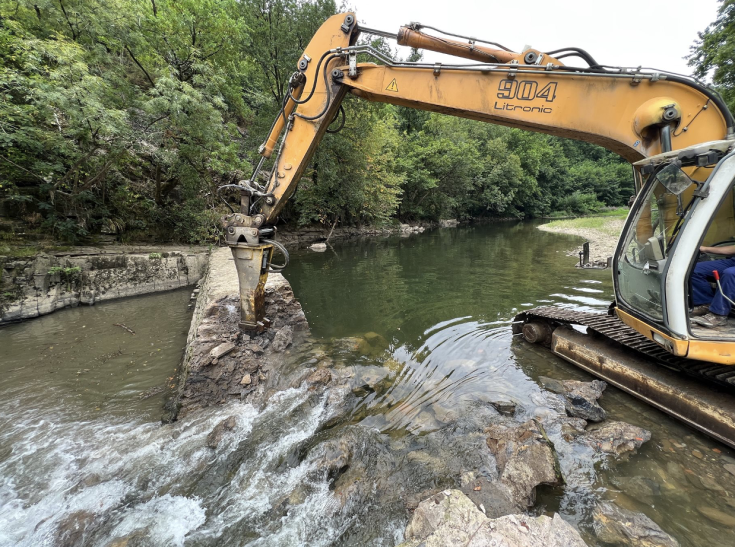Dam removal: Towards 25,000 km free-flowing rivers
For the year 2022, Dam Removal Europe* has reported a record number of at least 325 dam removals in 16 European countries. This is an increase of 36% from the barrier removals reported in 2021. Spain, where law requires owners to remove any obsolete river barriers, has been the trailblazer with 133 removals, followed by France (69) and Sweden (45).
For the first time, Latvia and Luxemburg also reported dam removals in 2022. Herman Wanningen, director of the World Fish Migration Foundation and founder of Dam Removal Europe said: “These numbers make me proud because we’re doing a lot to mainstream dam removal, and it works. It shows countries are picking up speed on implementing this river restoration tool.”
River barriers such as dams and weirs block fish migration routes. They often lead to the loss of breeding areas and reduced numbers of species such as eel, sturgeon, trout, and salmon. The barriers affect the entire river ecosystems with several harmful consequences including biodiversity loss, i.e. the decline of 93% in freshwater migratory fish populations in Europe.
The EU 2030 Biodiversity Strategy calls for greater efforts to restore freshwater ecosystems and the natural functions of rivers. The Strategy sets the target to make at least 25,000 km of rivers free-flowing again by 2030. This can be achieved by removing primarily obsolete barriers as well as by restoring floodplains and wetlands. The proposed EU Nature Restoration Law (Art. 7) also sets obligations to removing river barriers in order to contribute to the natural longitudinal and lateral connectivity of rivers.
The growing number of dam removals is a great success but there is still a long way to go. AMBER, an EU-funded research project, has carried out extensive work on river barriers. It estimates that there may be well over 1 million barriers in Europe's rivers. About 150,000 of these barriers are considered obsolete and at risk to collapse. These obsolete structures are the main target for the European Commission as they can be removed in an easier and cheaper manner than larger structures.
The increased number of dam removals can be attributed to the coordinated efforts of national and regional public authorities to report removed barriers as well as the hard work of water agencies, river trusts, NGOs, scientists, researchers, and many river restoration practitioners and volunteers. Last but not least, dam removal now also benefits from newly available funding opportunities, like the Open Rivers Programme.
At the Interreg Europe Policy Learning Platform, we treat topics related to river restoration, discover the sources of information we already have available.
Sources of information
- Workshop on Rethinking local policies – Bringing back nature to the city
- Webinar series on Climate adaptation in deltas I: Coastal restoration
- Webinar series on Climate adaptation in deltas II: Wetland restoration
- European Commission guidance document on Barrier removal for river restoration
- E-workshop on Living rivers: a driver for sustainable regional development
- Policy Brief on Rivers and wetlands
- Policy Brief on Preserving and restoring biodiversity
- Story on The return of the wild salmon
*Dam Removal Europe’s overall ambition is to restore the free-flowing state of rivers and streams in Europe. It is a coalition of seven organisations: the World Wildlife Fund, The Rivers Trust, The Nature Conservancy, the European Rivers Network, Rewilding Europe, Wetlands International Europe, and the World Fish Migration Foundation.
